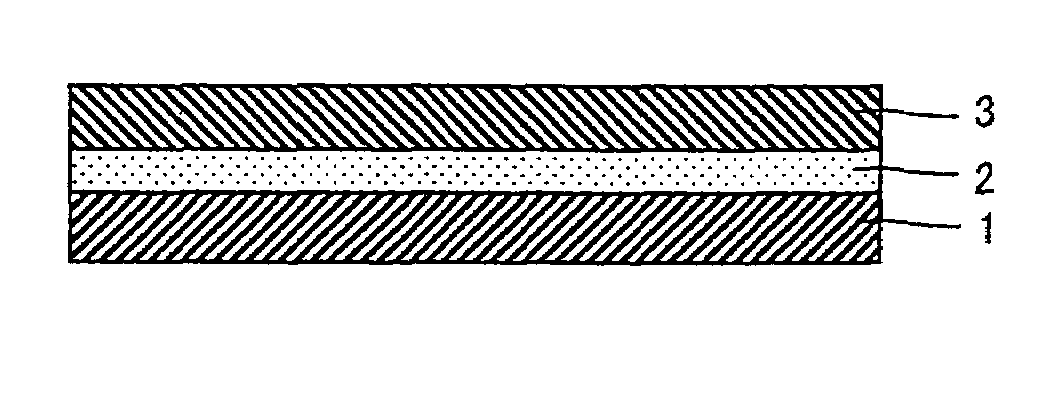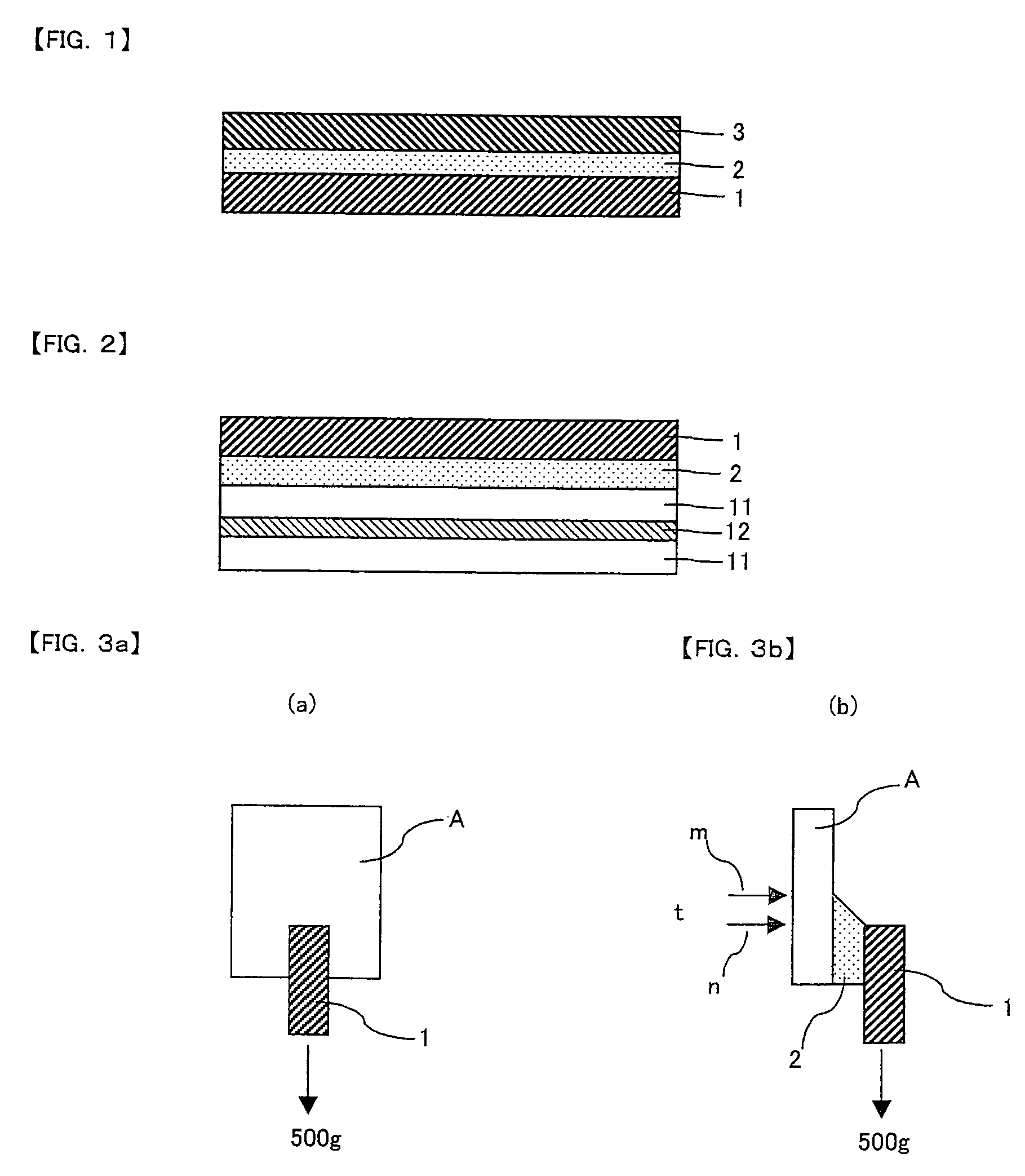Method of manufacturing image display, image display and adhesive optical film
a technology of adhesive optical film and image display, which is applied in the direction of polarising elements, solid-state devices, controlling lamination, etc., can solve the problems of scattered bright spots, large scratching of glass substrate surface, so as to avoid display defects, sufficient softness, and sufficient softness
- Summary
- Abstract
- Description
- Claims
- Application Information
AI Technical Summary
Benefits of technology
Problems solved by technology
Method used
Image
Examples
example 1
(Preparation of Pressure-sensitive Adhesive)
[0094]In 100 pats of ethyl acetate, 100 parts of butyl acrylate, 0.2 parts of 2-hydroxyethyl acrylate, 2 parts of acrylic acid, and 2 parts of azobisisobutyronitrile were allowed to react under stirring at 60° C. for 10 hours to form a solution of an acrylic polymer with a weight average molecular weight of 1300000. Based on 100 parts of the polymer solid, 0.5 parts of an isocyanate type crosslinking agent (Coronate L manufactured by Nippon Polyurethane Co., Ltd.) was added to the polymer solution to prepare a pressure-sensitive adhesive solution.
(Preparation of Adhesive Optical Film)
[0095]An 80 μm-thick polyvinyl alcohol film was stretched to five times in an aqueous iodine solution and then dried. A triacetyl cellulose film was adhered with an adhesive to both sides of the stretched film to form a polarizing film.
[0096]The prepared pressure-sensitive adhesive solution was applied to a releasable film so as to form a 40 μm-thick pressure-...
example 2
(Preparation of Pressure-sensitive Adhesive)
[0097]A pressure-sensitive adhesive solution was prepared using the process of Example 1 except that the amount of the crosslinking agent was changed to 0.3 parts.
(Preparation of Adhesive Optical Film)
[0098]An adhesive polarizing film was prepared using the process of Example 1 except that the above prepared pressure-sensitive adhesive solution was used to form a 25 μm-thick pressure-sensitive adhesive layer.
example 3
(Preparation of Pressure-sensitive Adhesive)
[0099]In 100 parts of ethyl acetate, 80 parts of 2-ethylhexyl acrylate, 19 parts of butyl acrylate, 1 part of 4-hydroxybutyl acrylate, and 2 parts of azobisisobutyronitrile were allowed to react under stirring at 60° C. for 10 hours to form a solution of an acrylic polymer with a weight average molecular weight of 1200000. Based on 100 parts of the polymer solid, 0.05 parts of an isocyanate type crosslinking agent (Coronate L manufactured by Nippon Polyurethane Co., Ltd.) was added to the polymer solution to form a pressure-sensitive adhesive solution.
(Preparation of Adhesive Optical Film)
[0100]An adhesive polarizing film was prepared using the process of Example 1 except that the above prepared pressure-sensitive adhesive solution was used to form a 15 μm-thick pressure-sensitive adhesive layer.
PUM
| Property | Measurement | Unit |
|---|---|---|
| creep displacement | aaaaa | aaaaa |
| creep displacement | aaaaa | aaaaa |
| creep displacement | aaaaa | aaaaa |
Abstract
Description
Claims
Application Information
 Login to View More
Login to View More - R&D
- Intellectual Property
- Life Sciences
- Materials
- Tech Scout
- Unparalleled Data Quality
- Higher Quality Content
- 60% Fewer Hallucinations
Browse by: Latest US Patents, China's latest patents, Technical Efficacy Thesaurus, Application Domain, Technology Topic, Popular Technical Reports.
© 2025 PatSnap. All rights reserved.Legal|Privacy policy|Modern Slavery Act Transparency Statement|Sitemap|About US| Contact US: help@patsnap.com


